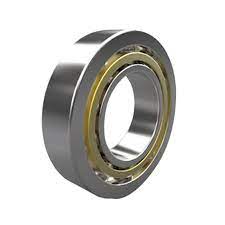

| select | Inquiry | Bearing No. | Boundary dimensions(mm) | Basic load ratings(kN) | Limiting speed(rpm ) | Mass | ||||
|---|---|---|---|---|---|---|---|---|---|---|
| d | D | B | Dynamic(Cr) | Static(Cor) | Grease | Oil | Kg | |||
| 7406AC | 30 | 90 | 23 | 55.6 | 32.7 | 6500 | 8500 | 0.96 | ||
| 7407AC | 35 | 100 | 25 | 66.4 | 41.9 | 5500 | 8000 | 1.14 | ||
| 7408AC | 40 | 110 | 27 | 73.7 | 42.1 | 5200 | 7000 | 1.4 | ||
| 7409AC | 45 | 120 | 29 | 84.5 | 55.1 | 5000 | 6500 | 1.8 | ||
| 7410AC | 50 | 130 | 31 | 115.8 | 78.3 | 4500 | 6000 | 2.25 | ||
| 7411AC | 55 | 140 | 33 | 121.4 | 84.5 | 4200 | 5600 | 2.75 | ||
| 7412AC | 60 | 150 | 35 | 131.8 | 95.3 | 3800 | 5200 | 3.4 | ||
| 7413AC | 65 | 160 | 37 | 142.5 | 106.7 | 3400 | 4800 | 4.2 | ||
| 7414AC | 70 | 180 | 42 | 154.6 | 122 | 3200 | 4500 | 5.8 | ||
| 7415AC | 75 | 190 | 45 | 165.2 | 133.5 | 3000 | 4200 | 7 | ||
| 7416AC | 80 | 200 | 48 | 176.5 | 147.2 | 2800 | 4000 | 8.4 | ||
| 7417AC | 85 | 210 | 52 | 188 | 161.5 | 2600 | 3700 | 9.6 | ||
| 7418AC | 90 | 225 | 54 | 200.3 | 178.1 | 2400 | 3400 | 11.2 | ||
Basic Design Requirements for High-Speed Angular Contact Ball Bearings
Angular contact ball bearings can be divided into three categories based on application:
1. Maximum dynamic load rating is the design goal.
2. Ultra-high speed is the design goal.
3. Both high speed and dynamic load rating are design goal
When maximum dynamic load rating is the goal: Rolling element diameter Dw = (D-d)/2 x 0.618
When ultra-high speed is the goal: Rolling element diameter Dw = (D-d)/2 x 0.384≈0.4
When both high speed and load capacity are considered: Rolling element diameter Dw = (D-d)/2 x 0.5
The cage retaining rib coefficient is selected from Table 2.
Phenolic laminated fabric cages are very important for high-speed bearings. There are three cage guiding methods - inner land riding, outer land riding, and roller riding. Inner land riding has smaller moment of inertia and saves material but allows fewer rolling elements compared to outer land riding. Outer land riding has higher moment of inertia and can accommodate more rolling elements than inner riding. Roller riding generates less heat and noise at the same speed compared to inner and outer riding, but the structure is complex and difficult to manufacture, only suitable for molded plastic cages. For high-speed bearings, the cage radial wall thickness and width should be minimized, as long as strength permits. This not only reduces moments of inertia, but more importantly benefits heat dissipation and lubrication.
In summary, cage design is critical for high-speed angular contact ball bearings. Structural optimization helps meet strength, guidance, and inertia requirements while enabling heat dissipation, lubrication, and high-speed operation.